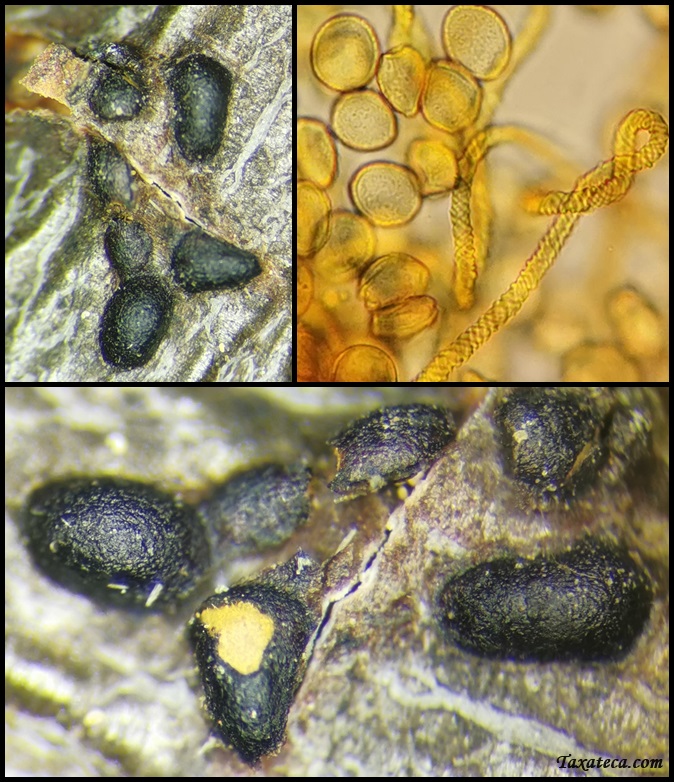
Number of species in the collection: 1.
Pictures of Trichiales:
Characteristics of Trichiales:
The order Trichiales, named after the type genus Trichia and meaning
something like "hairs," is a globally distributed group that grows on
decomposing plant remains, mainly woody debris.
Like the rest of the class Myxomycetes, its species can have unicellular
amoeboid phases, unicellular flagellated phases, and phases where cells fuse
together forming gelatinous macroscopic masses, which eventually develop into
sporangia. Its fruiting bodies may or may not have a capillitium (structural
network within the spore mass), which when present can be free or connected to
the outer layer (peridium), but in the latter case, it does not open at the top
upon maturity as with other groups. The capillitium may be ornamented with
rings, reticulations, spines, or spirals. The lack a columella (a continuation
of the stalk into the sporotheca). The spores are colorless or light, never
dark, with various crests or reticulations.
The order Triciales appears to be related to the order
Liceales.
Species of Trichiales present in the collection:
Trichia alpina (R.E. Fr.) Meyl, 1920.
23-July-2023.
Europe, Switzerland, Valais canton, Entremont District, Corbassière Glacier,
eastern side of the Glacier, on a rocky slope, 2094 m. asl. On Alnus
viridis branches covered by snow during winter.
Coordinates: 46,0261005 7,2760106.
Obs: Boluda 17869.
Collected by: Carlos Galan Boluda.
Identified by: Juan Carlos Zamora.
Domain: Eukaryota.
Kingdom: Amoebozoa.
Phylum: Conosa.
Class: Myxomycetes.
Order: Trichiales.
Family: Trichiaceae.
Genus: Trichia.
Species: Trichia alpina.
-
Tiene fases microscópicas unicelulares, que pueden ser o ameboides o flageladas, estas últimas nadadoras. Cuando las condiciones son adecuadas forma una masa de aspecto ameboide, mucosa, rojo-anaranjada, formada por una sola célula de hasta varios centímetros, con miles de núcleos, que se mueve lentamente sobre el sustrato nutriéndose de bacterias y otros microorganismos. Los cuerpos fructíferos tienen forma de almohadilla redondeada o alargada, generalmente de alrededor de 2 x 0.6 mm, pero pueden llegar a superar los 20 mm de longitud y aparecen aislados o agrupados. La capa externa es oscura, doble, cartilaginosa, con una membrana interna hialina. El interior es de un llamativo color amarillo, con el capilicio (red que soporta las esporas) de color marrón oscuro. Los elaterios tienen 2-6 bandas en espiral, un grosor de 4-6 micrómetros e extremos cónicos cortos y las esporas son amarillas, irregularmente globulosas, de 13-20 micrómetros, con la superficie espinulosa.
Se distribuye por los ambientes alpinos y fríos de todo el mundo. Crece sobre
ramillas, tallos y hojas, frecuentemente de gramíneas, aplastadas por la
acumulación de la nieve invernal. Fructifica justo en el momento en que la nieve
se derrite, aprovechando el agua que esta libera.

Order: Trichiales